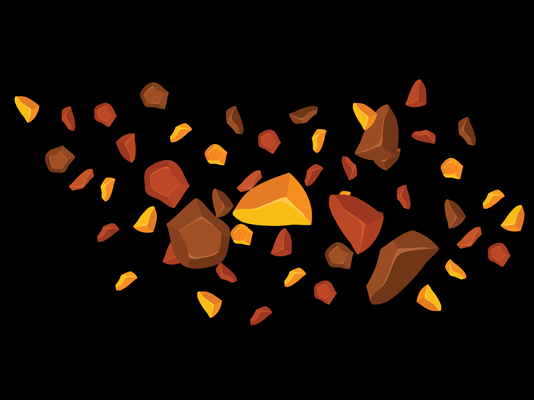Ariel, a moon of Uranus
118,620 miles
722 miles
Ariel is the fourth-largest moon of Uranus and the second moon to be discovered by English astronomer William Lassell, who spotted it in 1851 along with Umbriel. It has a diameter of 1,158 kilometres (720 miles) and takes just over two and a half Earth days to complete an orbit of Uranus.
Ariel’s surface is one of the brightest among Uranus’s large moons, reflecting about one-third of the sunlight that reaches it. This brightness, combined with its relatively low number of large impact craters, suggests that Ariel has experienced resurfacing events in its past. Vast canyons, long fault lines, and smooth plains cover much of the moon, pointing to a history of internal activity. Many of these features may have formed when the moon’s icy crust stretched and cracked, possibly due to tidal heating when Ariel’s orbit interacted with other moons.
Ariel appears to be made of roughly equal amounts of ice and rock. Its surface shows evidence of both water ice and carbon dioxide ice, the latter possibly formed by chemical reactions involving sunlight. Like some of Uranus’s other moons, Ariel’s landscape is a mix of old and young regions, with some areas retaining ancient craters and others showing signs of more recent geological activity.
Ariel is unusual among Uranus’s moons in that it appears in both Shakespeare’s The Tempest and Alexander Pope’s The Rape of the Lock.
In The Tempest (1610–1611), Ariel is a magical spirit who serves the sorcerer Prospero. Ariel carries out Prospero’s bidding, conjuring storms, luring enemies into traps, and creating illusions — all in exchange for eventual freedom.
In Pope’s satirical poem The Rape of the Lock (1712), Ariel is the chief sylph, a guardian spirit who watches over Belinda, the poem’s heroine, and warns her of impending misfortune.
The International Astronomical Union (IAU) follows the tradition of naming Uranian moons after characters from Shakespeare’s plays or Pope’s poem. Ariel’s dual literary heritage makes it one of the most distinctive names in the group.






